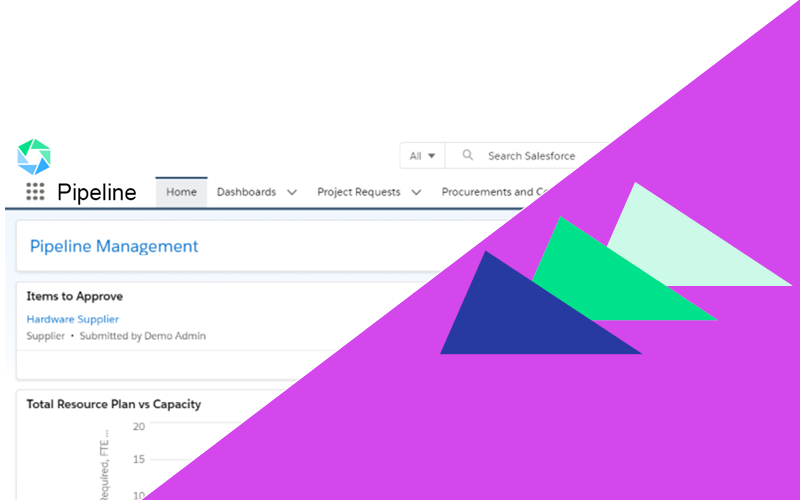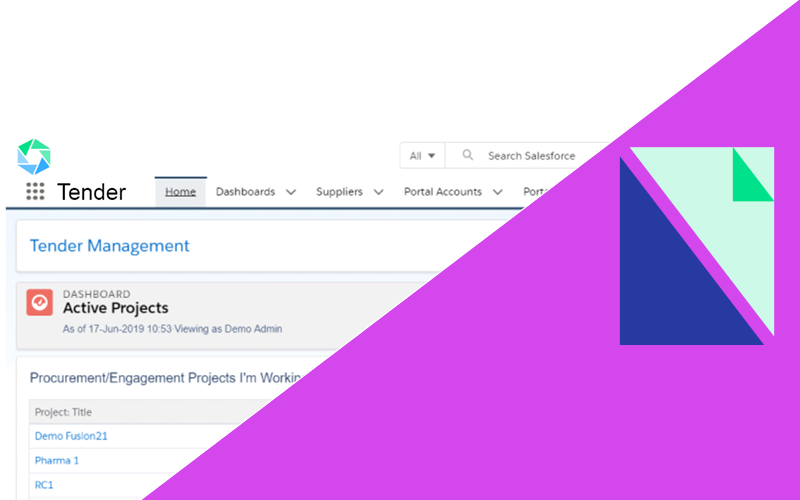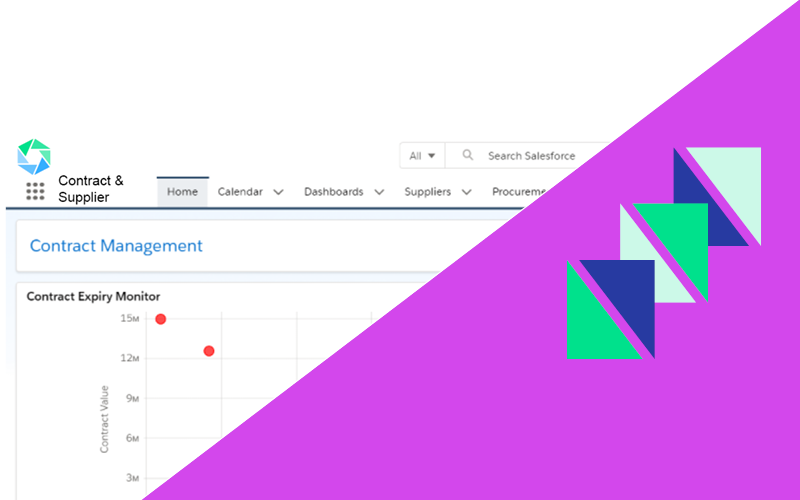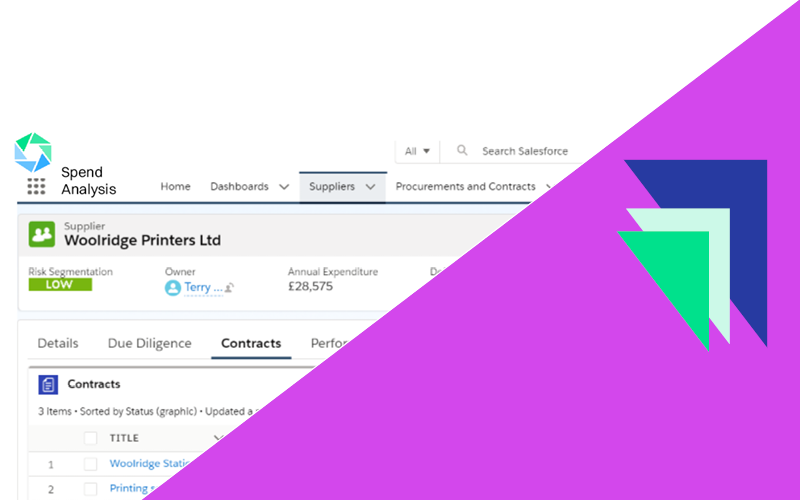Learn how a procurement software system can help your insurance company overcome the challenges faced by procurement teams.
Procurement teams in the insurance sector face a unique set of challenges. From managing complex supplier relationships and ensuring regulatory compliance to maintaining cost efficiency and mitigating risks, insurance companies need a procurement function that is structured, transparent and strategic.
However, many insurance procurement teams still rely on manual processes, scattered data and disconnected workflows, making it difficult to track spending, negotiate better contracts, or respond proactively to supply chain risks.
This is where an eProcurement software system such as Atamis can transform your approach, enabling smarter decision-making, streamlined operations and greater cost control. Read on to find out more…
7 Ways a Procurement Software System Can Help You Overcome Challenges
1. Gain Full Visibility Over Procurement Activities
Without a doubt, one of the biggest challenges for procurement teams in the insurance sector is fragmented procurement data. Without a centralised system, it’s difficult to track spending, supplier contracts and sourcing activities, leading to inefficiencies, compliance risks and missed cost-saving opportunities. A procurement management software system provides a single source of truth, allowing procurement teams to:
- Access real-time procurement data across multiple departments, regions and business units.
- Monitor upcoming procurement activities, including contract renewals, tenders and supplier performance reviews.
- Generate automated reports to track procurement performance, spending patterns and compliance.
With full procurement visibility, insurance companies can make informed decisions, optimise supplier contracts and proactively manage budgets.
2. Strengthen Supplier and Contract Management
Insurance companies rely on a wide network of suppliers, from IT services and claims management vendors to facilities providers and outsourced business process services. It’s no wonder that keeping track of supplier agreements, performance and compliance obligations can be overwhelming without the right tools. A procurement software system helps procurement teams manage supplier relationships effectively and ensure supply chain resilience by:
- Maintaining a centralised contract repository, making it easy to track renewal dates, SLAs and supplier obligations.
- Monitoring supplier performance in real-time against agreed KPIs, helping teams identify underperformance before it impacts business operations.
- Standardising supplier onboarding and due diligence, ensuring all vendors meet compliance and risk management requirements.
With a structured contract and supplier management system, insurance procurement teams can reduce contract risks, negotiate better terms and build stronger supplier partnerships.
3. Improve Compliance
The insurance industry is one of the most highly regulated sectors, with strict rules governing procurement, supplier selection and data security. Manual procurement processes make it harder to track compliance, audit supplier contracts and ensure procurement policies align with regulatory requirements – which is exactly where a procurement software system comes in! A procurement software system ensures:
- Automated compliance tracking, making it easier to ensure supplier agreements meet legal and regulatory standards.
- A complete audit trail, capturing every procurement decision, supplier communication and contract approval for full transparency.
- Standardised workflows, ensuring all procurement processes adhere to internal policies and external regulations.
By embedding compliance into procurement processes, insurance companies can reduce regulatory risks and ensure procurement teams operate with full accountability.
4. Control Costs and Improve Budget Management
Procurement teams in insurance companies are under constant pressure to control costs while maintaining service quality and business continuity. However, without a procurement software system, it’s difficult to track where money is being spent, whether procurement decisions align with budgets and if savings opportunities are being missed. A procurement software system helps insurance companies:
- Monitor spending in real time, identifying areas where procurement costs can be reduced.
- Automate approval workflows, ensuring purchases are aligned with budgetary limits.
- Use procurement analytics to forecast costs, enabling teams to negotiate better supplier rates and plan procurement cycles effectively.
With enhanced cost visibility and spend control, procurement teams can maximise cost savings while ensuring suppliers deliver the best value.
5. Reduce Procurement and Supply Chain Risks
In an industry where business continuity is critical, procurement teams must be able to identify and mitigate risks across their supply chain. Supplier disruptions, contract failures, or unexpected cost fluctuations can impact insurance operations, making proactive risk management essential. A procurement software system strengthens risk management by:
- Providing real-time risk assessments of suppliers, contracts and procurement activities.
- Automating supplier due diligence, ensuring all vendors meet financial, legal and operational risk criteria.
- Offering predictive analytics, allowing teams to anticipate and address potential procurement disruptions before they escalate.
By integrating risk management into procurement workflows, insurance companies can safeguard operations and reduce exposure to financial or reputational risks.
6. Streamline Tender and Supplier Selection Processes
Selecting the right suppliers is crucial for insurance companies, especially for outsourced services, IT procurement and large-scale infrastructure projects. However, managing tenders manually can lead to inefficiencies, lack of transparency and compliance risks. A procurement software system simplifies tendering by:
- Automating tender creation, evaluation and supplier communication, ensuring a structured and compliant sourcing process.
Providing a central platform for bid submissions, making it easy to compare supplier proposals.
Reducing administrative workload, allowing procurement teams to focus on strategic supplier selection rather than paperwork.
By streamlining tender management, insurance procurement teams can ensure fair, efficient and cost-effective supplier selection.
7. Enable Smarter Decision-Making with Data-Driven Insights
Finally, procurement decisions in the insurance sector must be data-driven to ensure efficiency, cost-effectiveness and compliance. However, without centralised procurement data, teams struggle to gain insights into supplier performance, cost trends and risk exposure. A procurement software system provides:
- Advanced reporting dashboards, offering real-time insights into procurement performance, spending trends and contract effectiveness.
- Supplier benchmarking tools, enabling procurement teams to compare vendor performance and pricing.
- Predictive analytics, helping teams forecast procurement needs and optimise purchasing strategies.
By leveraging data-driven procurement strategies, insurance companies can enhance decision-making, reduce costs and strengthen supplier management.
Why Atamis is the Best Procurement Software System for Insurance Companies
So, why choose Atamis for your insurance business? Well for starters, Atamis is a fully integrated, modular procurement software system designed to help insurance companies streamline procurement, strengthen supplier relationships and maintain compliance.
With three modular apps for procurement Pipeline Planning, Tender Management and Contract & Supplier Management, alongside a suite of customisable Enhancers, Atamis provides an end-to-end procurement solution for insurance procurement teams.
Key Benefits of Atamis for Insurance Procurement Teams:
End-to-End Procurement Visibility – Manage procurement from planning to contract execution in a single platform.
Full Compliance Control – Ensure procurement activities align with insurance industry regulations and audit requirements.
Risk Management Tools – Monitor supplier risks, track SLAs and ensure business continuity.
Spend Analysis & Budget Forecasting – Gain insights into procurement costs and optimise spending.
Seamless Supplier Communication – Engage vendors through a secure supplier portal for tendering and contract collaboration.
Book a Free Demo – See Atamis in Action!
If you’re looking for a smarter way to manage procurement in your insurance company, book a free demo today and discover how Atamis can help you increase efficiency, strengthen supplier relationships and maintain compliance with ease. Alternatively, contact our team to learn more about how we can help.
 Our Pipeline App empowers your team to plan ahead and forecast for upcoming procurement activities.
Our Pipeline App empowers your team to plan ahead and forecast for upcoming procurement activities.  The Tender App allows your team to visualise all sourcing activities within your Atamis platform, from issuing tenders to receiving bids.
The Tender App allows your team to visualise all sourcing activities within your Atamis platform, from issuing tenders to receiving bids. Our Contract & Supplier App puts your team in firm control of your key supplier relationships and provides a central repository for all contracts.
Our Contract & Supplier App puts your team in firm control of your key supplier relationships and provides a central repository for all contracts.  Our Enhancers ensure your solution is tailored to your needs. Pick and choose additional functionality that fits your requirements.
Our Enhancers ensure your solution is tailored to your needs. Pick and choose additional functionality that fits your requirements. 